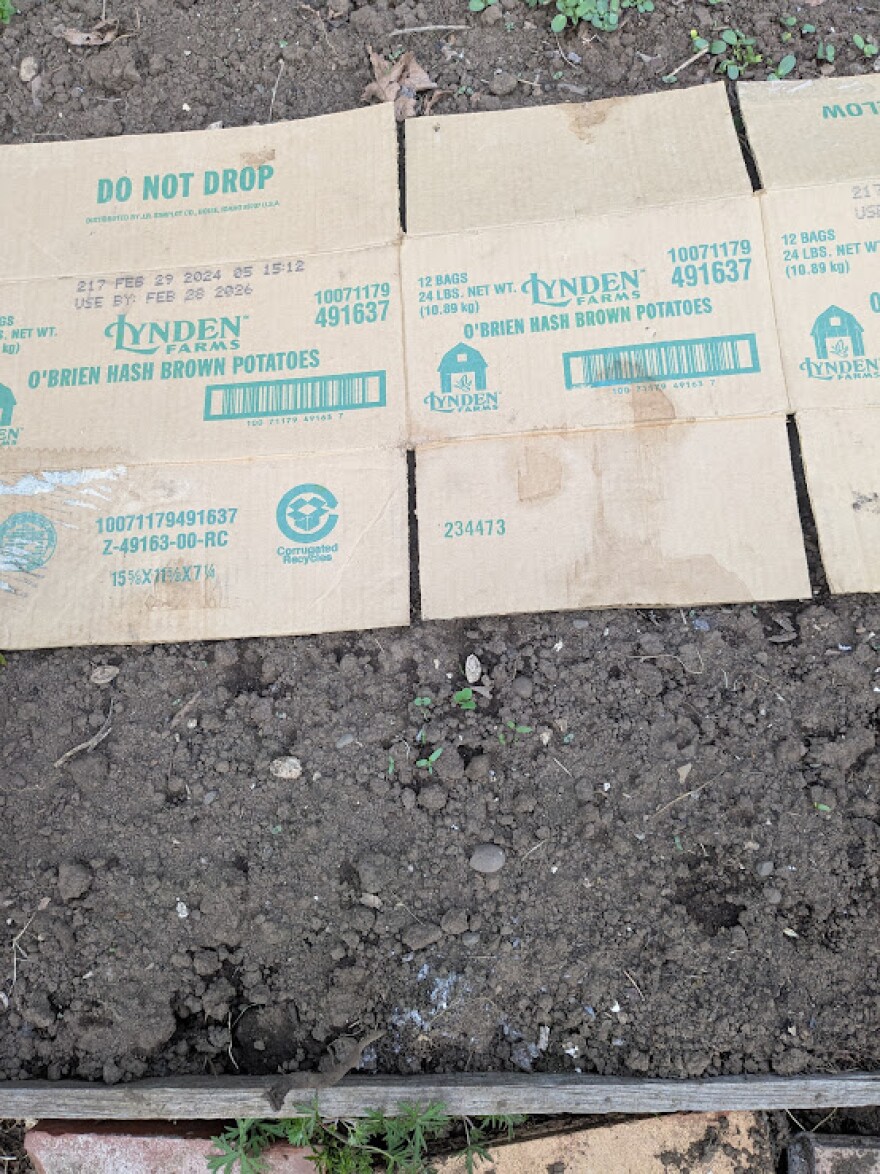Our dry sunny spring has been lovely - unless you are a tiny lettuce of carrot seed hoping for enough moisture to sprout and thrive in the unusually dry soil. Typically, April Showers bring May vegetables, but this year keeping recently planted beds damp has been difficult. The dry air evaporates any water you put on before the seeds have time to germinate.
There are a couple of things you can do to increase the germination rate of your seeds - now and in the future. Right now, after planting, put a piece of cardboard on the soil for a few days - a week with carrots. Lift it during warm weather to see if you have seeds sprouting. Cloche material - a thin semi-transparent fabric row cover - can help with sprouting too.
I plant lettuce with my carrots. Once the lettuce is up and shading the soil, the carrots - or beets are more likely to sprout. Arugula or radishes can provide soil shading too. After the target crop is up, harvest the green salad ingredients to give the carrots more sun to grow in.. It's an eat eat situation.
Starting lettuce and beets in little pots and transplanting can help. Carrots don't transplant well, but if nothing sprouts in the garden, it's worth a try. For the future, carrots prefer a more alkaline soil. Try adding some lime to next year's carrot bed this fall. More organic matter - compost, decomposed leaves, and the like- in your soil will help it hold moisture. Work some into your garden this fall for better sprouting next year.
Fresh seed can make a big difference. If you are using old seed - I'm guilty, plant twice as much. As the weather and soil warm, the big seed plants - beans, corn, squash, and the like will go in. They are usually less sensitive to intermittently dry soil than the small seeded vegetables. They just take longer to produce a fresh harvest.
Eat hearty - I'm John Fischer with Good Gardening.




